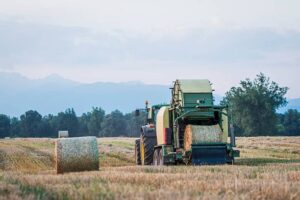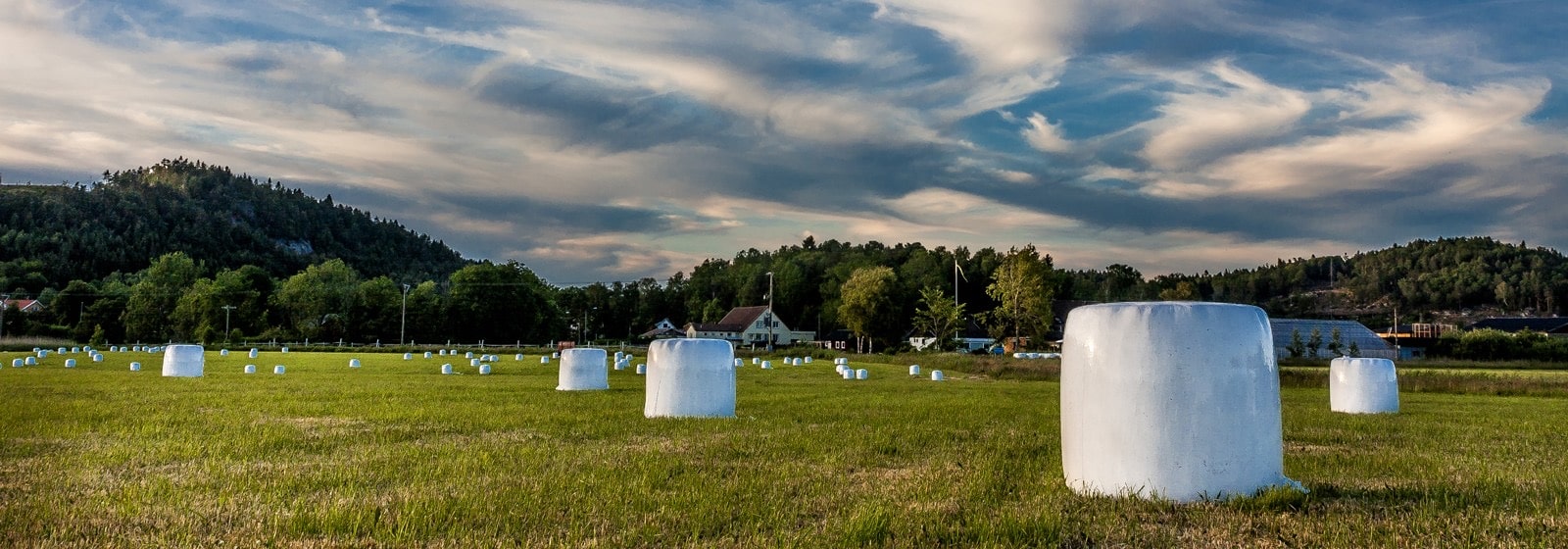Getting the most out of state-of-the-art baling machinery requires high-quality twine. Several attributes should be evaluated when choosing the right baler twine for a specific task.
Designed for baling hay, this poly twine is rot and mildew resistant. It is also easy on hands, knots well and won’t become brittle. For more UV-resistant baling twine, check this out.
Polypropylene
 A popular choice for baling twine, this 9,000′ high visibility poly twine is made in the USA and has 130 lb knot strength. It’s also rot and mildew resistant, so it stands up well to outdoor conditions. It’s also UV treated to resist intense weather exposures over longer periods of time.
A popular choice for baling twine, this 9,000′ high visibility poly twine is made in the USA and has 130 lb knot strength. It’s also rot and mildew resistant, so it stands up well to outdoor conditions. It’s also UV treated to resist intense weather exposures over longer periods of time.
Sisal twine has long been used to bind hay and straw bales together, but it won’t biodegrade, and the tensile strength of sisal isn’t as great as that of poly. For these reasons, many farmers now use twisted polypropylene twine for baling.
It has a higher tensile strength than sisal, but it still decomposes quickly and releases low levels of volatile organic compounds. Polypropylene baler twine is also recyclable. As with all plastics, it must be sent to a specialist recycling waste handler for processing. The recycled twine can then be sent to schools and art centres for re-use in creative projects. It’s an environmentally friendly alternative to discarded natural sisal twine that has been sent to landfills.
Sisal
Sisal baler twine is a natural, sustainable choice for baling hay. It works well in a variety of baling machines and is treated to guard against mildew, rodents and rot. It’s also safe for your animals. It’s also biodegradable, which means it won’t contribute to landfill waste. For more UV-resistant baling twine, check this out.
Unlike poly twine, which is made of plastic polymer, this type of twine is composed of individual strands of plant materials that are twisted together. It’s a good choice for those who prefer the look and feel of natural twine, but it doesn’t have the same tensile strength as poly twine.
It’s important to use the right kind of twine when you’re baling high-moisture hay. Vermeer recommends using net wrap before you encase your baleage, which will minimize the possibility of holes in the film and will help create a smoother surface for wrapping. It’s also a good idea to avoid using rodenticide-treated sisal in conjunction with net wrap, as it tends to degrade the film over time.
Natural Fibers
When it comes to baling hay or straw, choosing the right twine is important. You need a strong twine that can stand up to weathering and UV radiation exposure. A quality twine will also be easy to spin and won’t stretch, so you can easily tie your bales. It should also be biodegradable, which means that it won’t harm the environment or contribute to landfill waste.
There are different types of baling twine, from natural fibers to polypropylene. Some are more expensive than others, but they all offer the same benefits: they’re durable and biodegradable. They can withstand a lot of weight, which makes them ideal for securing large bales.
If you’re looking for a more environmentally friendly option, consider choosing jute or hemp twine. They’re made from plant fibres and are biodegradable, so they don’t cause pollution or clog sewers. Plus, they’re less flammable than synthetic twines. They’re also less expensive than other types of twine. For more UV-resistant baling twine, check this out.
Colors
Baler twine comes in a variety of colors. The color helps the farmer identify each bale from a distance. This can save time and money because the twine can be easily retrieved from the ground. It also reduces the risk of the twine getting caught on something else.
Polypropylene twine is rot and mildew resistant, and it is biodegradable. It is also stronger than sisal twine. Its versatility makes it ideal for tying hay bales and repairing tractor parts. It is also suitable for outdoor storage applications.
Most made-in-the-USA options have a guaranteed number of feet per carton. For example, BridonMAX round, slit-film 110 weight twine has a guarantee of 2600 feet per carton. This is a good amount of twine for all types of crops and baling conditions.

